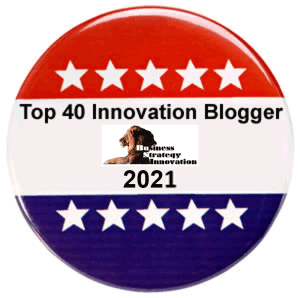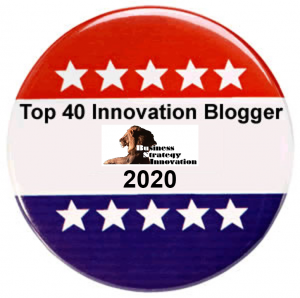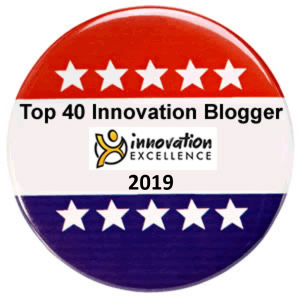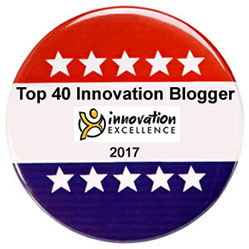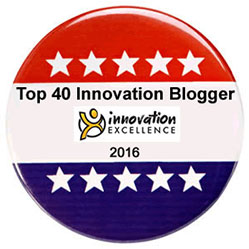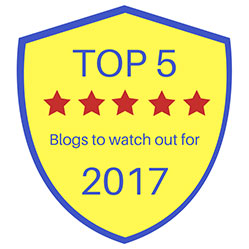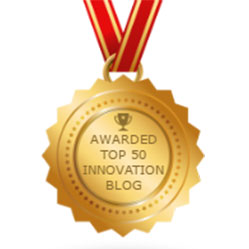Amazingly Fabulous Tools is an award-winning, entrepreneurial market leader in the global machine engineering industry. The ambitious and proactive CEO Charlie Chaps invested in despatching a Terrific Team of Enthusiastic Engineers to Silicon Valley to research, investigate, and report on how to capture and emulate the critical ingredients of its “secret innovative sauce.” Upon their return, the Terrific Team of Enthusiastic Engineers created and shared a beautiful, illustrated PowerPoint presentation with the board despite secretly knowing and passively avoiding saying that Amazingly Fabulous Tools could not replicate what they had discovered, primarily due to the top five innovation myths operating in the organisation.
The Corporate Antibodies
This is due to their overt experience with the organisation’s “innovation antibodies”, which resisted change and protected the status quo — consisting of rigid people and processes that extinguish a new idea as soon as it begins to course through the organisation. In the Amazingly Fabulous Tool company, most people, especially the founders and the board, unconsciously neutralised any forces that threatened to destabilise the company’s current state and stunt its growth by shutting down the fresh ideas and unconventional thinking their company needed.
Charlie Chaps built a fantastic, largely incomprehensible strategic plan with a BHAG, strategic goals, and sets of individual KPIs. This plan provided concrete evidence that reassured the board that the company was taking action to sustain its leadership position in the market and would take the business to the next level by growing its ROI. It also aimed to leverage the collective genius of its owners, Bob the Brave Builder and Eric the Energetic Entrepreneur, to ensure a legacy was left no matter who was at the helm.
The Innovation Culture Diagnostic Findings
A quantitative and qualitative cultural diagnostic revealed that people lacked permission, safety, and trust to speak up, rock the boat and challenge the status quo. It also showed that the organisation lacked rigour in its process disciplines and a focus on developing its people’s capabilities.
It also revealed that Amazingly Fabulous Tools was clandestinely driven by its founders’ and sales directors’ self-interest and greed due to the highly competitive profit-share sales model, not by an obligation and commitment to creating, inventing, designing, and delivering disciplined, innovative process improvements, products, and services that their customers would appreciate and cherish.
This was a stark contradiction and barrier to the company’s ability to sustain its enviable global reputation. Finally, people believed that Charlie Chaps’ fantastic strategic plan, BHAG, goals, and KPIs were disconnected from the organisation’s current reality and would not produce a collaborative and innovative organisation, so they did not accept or apply the plan and kept safe by conducting business as usual.
The Top Five Innovation Myths
Because the corporate antibodies revealed that people unanimously believed that:
- Myth # 1: Innovation is a solo activity; people believe that ” only the owners can innovate.”
- The Brutal Truth: There is no innovation without inclusion and collaboration, which is done through effective and disciplined teaming and networking.
- Myth #2: Innovation is top-down; people believed they were not responsible or accountable for planning and were forced to be reactive. “The planning’s difficult, that’s for sure because we’re firefighting all the time, and that goes back to the frustration of not having enough time to do what needs to get done…and resources and …tools.”
- The Brutal Truth: When people have the permission and safety to challenge the status quo, make mistakes, and are trusted to learn through experimentation, innovation can emerge anywhere in an organisation, or team.
- Myth #3: Innovation is about the newest thing; people believed that radical innovation was needed when agility was the problem; “The scary thing is our key competitor is getting more flexible (agile); we’re just getting more reliable (stable). It’s the stupid things that are so annoying. It’s the embarrassing things.”
- The Brutal Truth: Innovation is guided by its strategic intent, it can be incremental, continuous, radical or breakthrough, disruptive or differentiated, as there is no one best way of innovating.
- Myth # 4: Innovation can’t be taught; people believed that they did not have to learn to improve or innovate when they encountered quality issues continuously; “A lot of times, it’s not because the customer wants the machine tomorrow but because we want to ship it tomorrow because we want to get it off the floor, we want to meet numbers, we want the cash. We usually drive the time frame and rush it out the door, creating many internal problems. It also creates problems externally with the customer when they think they’re getting a machine fully intact, but half its parts are missing….”
- The Brutal Truth: Innovators are not born and are made. Anyone can learn to innovate,
- Myth #5: You can’t force innovation; people were disempowered and did not take responsibility for influencing their environment to provide order and discipline; “It’s a traffic jam. That’s what we’ve got. It’s a traffic jam. Cars sitting bumper to bumper look like they are gridlocked. It represents the log jam of our activities. Where people are trying to push so many activities through two lanes of traffic when we’ve got six lanes worth of traffic.”
- The Brutal Truth: Innovation can emerge when people have a sense of urgency, understand, and are motivated to engage in necessary, high-impact cultural and organisational change. People must be prepared for it, change-ready and receptive, and intentionally pulled towards a compelling and desired future within an equalised environment that balances chaos and creativity with rigidity and discipline through rigorous planning.
The real costs to the organisation
People believed that “This business makes money despite itself. There is potential to be truly great”. This is the most significant innovation antibody because there was no sense of urgency or necessity to innovate. The company was quite comfortable with the status quo and had no reason to shift its habitual and unconscious comfort zone in ways that people and organisations must do to innovate because it involves being ready and receptive to mega-changes.
The significant investment in sending the Terrific Team of Enthusiastic Engineers to Silicon Valley sadly remained in the mythical realm of Innovation Dreamland.
So, lacking focus, discipline and rigour, the group of seriously qualified and intelligent engineers knowingly consistently despatched faulty million-dollar machines to highly valued, global customers.
The cost of rework and brand erosion were considerable.
These machines required considerable analysis, problem-solving, and rework upon their return. Their costs were not recorded as repairs, causing the engineering division to be consistently over budget. Charlie Chaps reacted by restricting its budget and inhibiting its investment in critical research and development, which is needed to create, invent, and innovate to repair and sustain its global reputation as an innovator.
Innovation Dreamland remained a mythical and magical fantasy in Amazingly Fabulous Tools.
Sadly, the organisation failed to shift its focus from challenge to opportunity because it could not resolve the corporate antibodies (implicit killers), remove the roadblocks, break down the internal cultural barriers to innovation and develop the agility necessary to become both a people-centric and customer-centric organisation.
It lost an opportunity to make innovation a daily habit for everyone by failing to embed it in its organisation as a way of life. It needed to empower, enable, and equip its talented, experienced and motivated people with the emotional energy, change, cognitive, and innovation agility to expose, challenge and resolve the underlying corporate antibodies.
It did not prioritise customer satisfaction and keep its promises by creating, inventing, and innovating high-value, quality products and services that improve the quality of their lives that are appreciated and cherished.
Many transformations and change-led innovation initiatives designed as strategic interventions fail due to a lack of alignment between strategy, structure, processes, and human skills, resulting in unproductive actions and poor human behaviours.
This is a short section from Chapter One of our new book “Boost Agility. Drive Transformation – Shaping Tomorrow by Empowering People to Innovate Today”, which will be published in 2025.
Please find out more about our work at ImagineNation™.
Please find out about our collective learning products and tools, including The Coach for Innovators, Leaders, and Teams Certified Program, presented by Janet Sernack, it is a collaborative, intimate, and profoundly personalised innovation coaching and learning program supported by a global group of peers over 9-weeks, and can be customised as a bespoke corporate learning program.
It is a blended and transformational change and learning program that will give you a deep understanding of the language, principles, and applications of an ecosystem-focused, human-centric approach, and emergent structure (Theory U) to innovation. It will also upskill people and teams and develop their future fitness within your unique innovation context. Please find out more about our products and tools.

